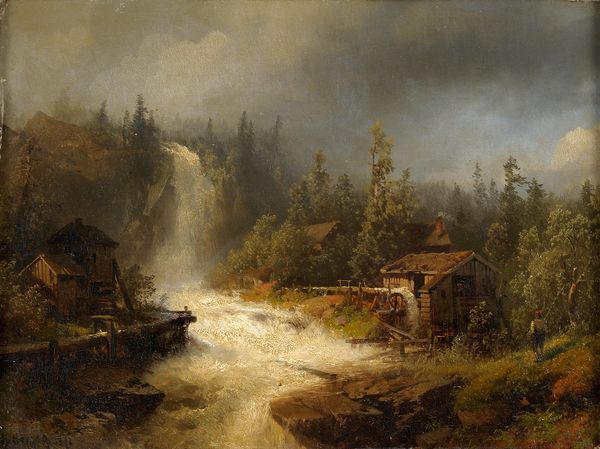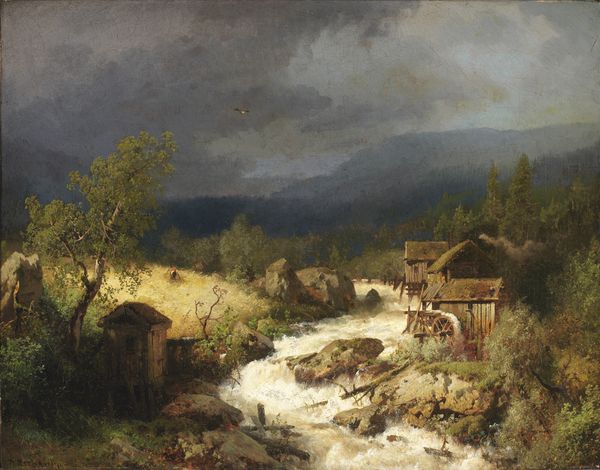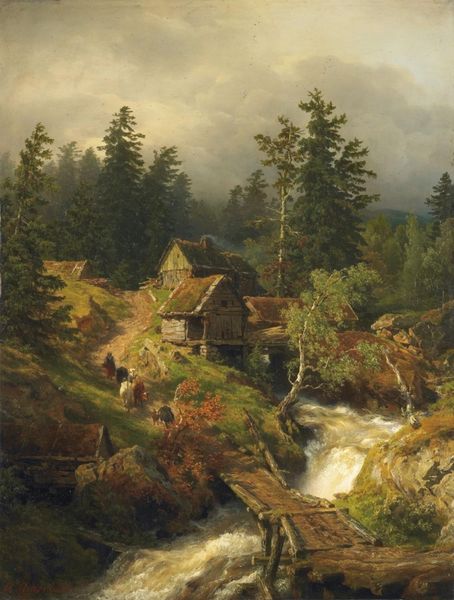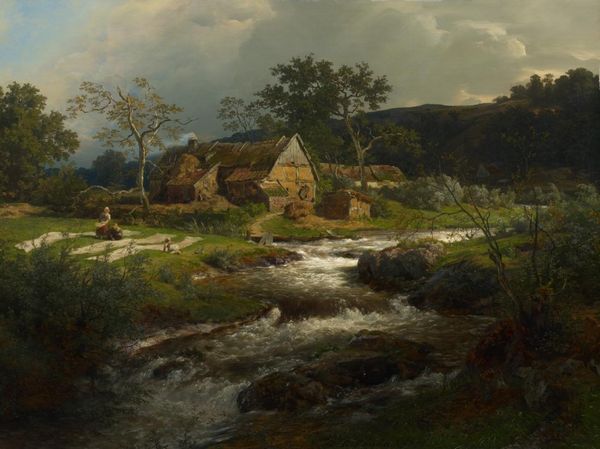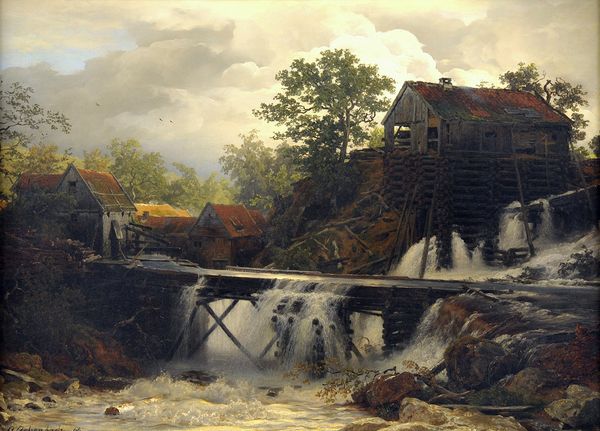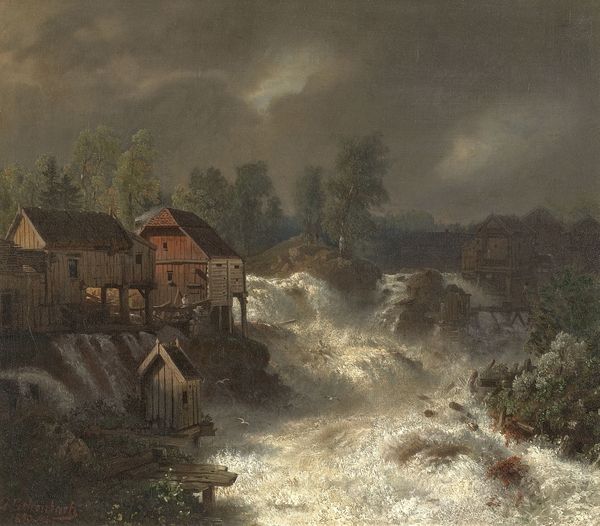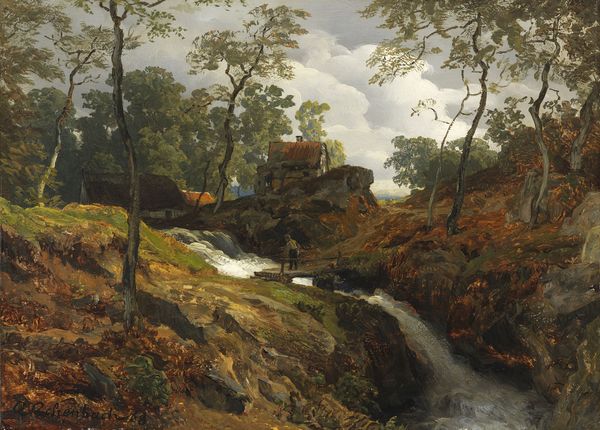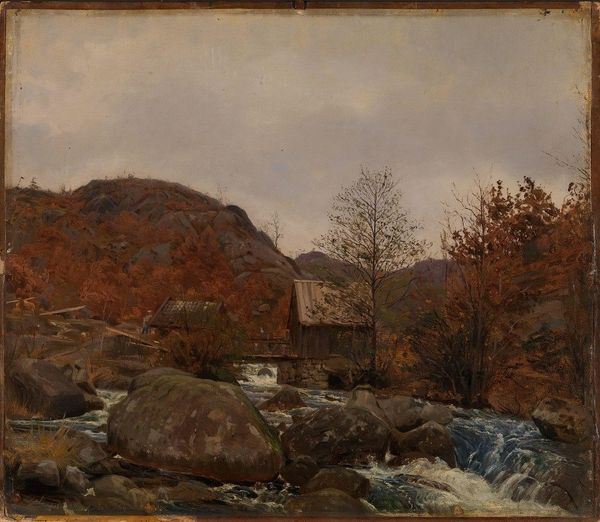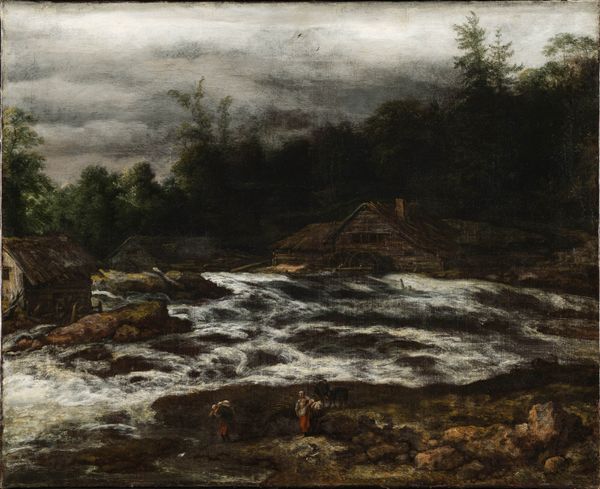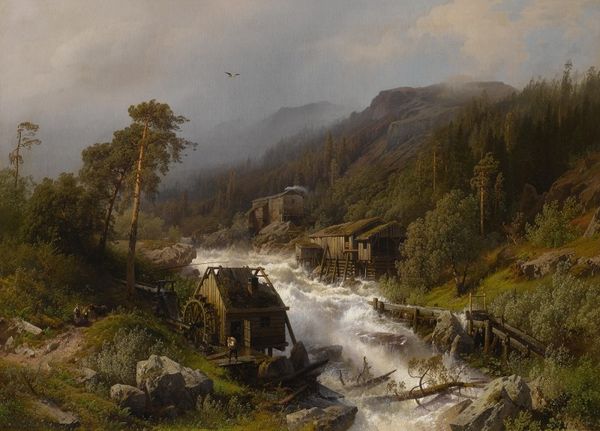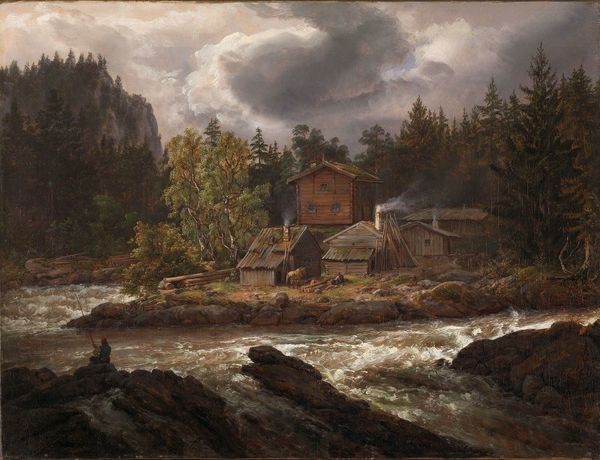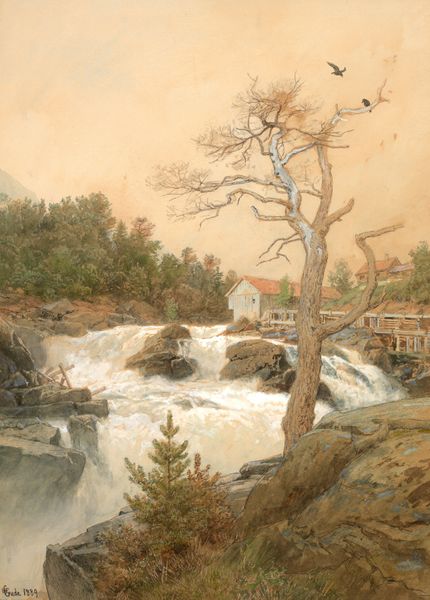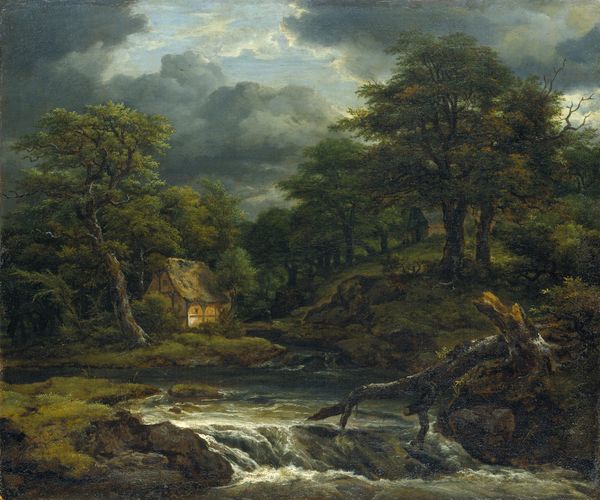
Copyright: Public domain
Editor: We’re looking at “The Mill,” an 1852 oil painting by Andreas Achenbach. It has such a strong Romantic feel; the rushing water, the solid mill buildings… What do you see in this piece? Curator: I see more than just Romanticism; I see the quiet engine of early industrial capitalism. The mill, a symbol of human ingenuity harnessing the power of nature, is presented without any of the typical Romantic glorification of untouched landscapes. Editor: How so? It still seems like a very pretty scene, idealized maybe? Curator: Well, think about it this way: where is the village this mill is supporting? What kind of labour is being performed? The absence of those narratives is very telling. Achenbach paints the mill, but silences the workers, their conditions. What do you think that omission represents? Editor: Maybe the focus is more on the mill itself, the technology? It’s a fairly new idea at the time. Curator: Precisely! And who benefits from this new technology? Who is missing from this picture? These are important questions about class and power that, I think, Achenbach's selective depiction inadvertently raises. This becomes particularly visible when one considers the history of water mills and their deep imbrication with capitalist production at this time. Editor: That's a great point. I hadn't considered the social implications, focusing more on the picturesque elements. Curator: Exactly. Recognizing the interplay of aesthetics, technology, and social dynamics enriches our experience of the work and encourages us to ask bigger questions about what we're looking at and how it's affecting and reflecting its surrounding environment and community. Editor: It gives me a whole new perspective. It is a reminder that we should seek out whose story the painting actually tells, as well as what it doesn’t show.
Comments
No comments
Be the first to comment and join the conversation on the ultimate creative platform.
